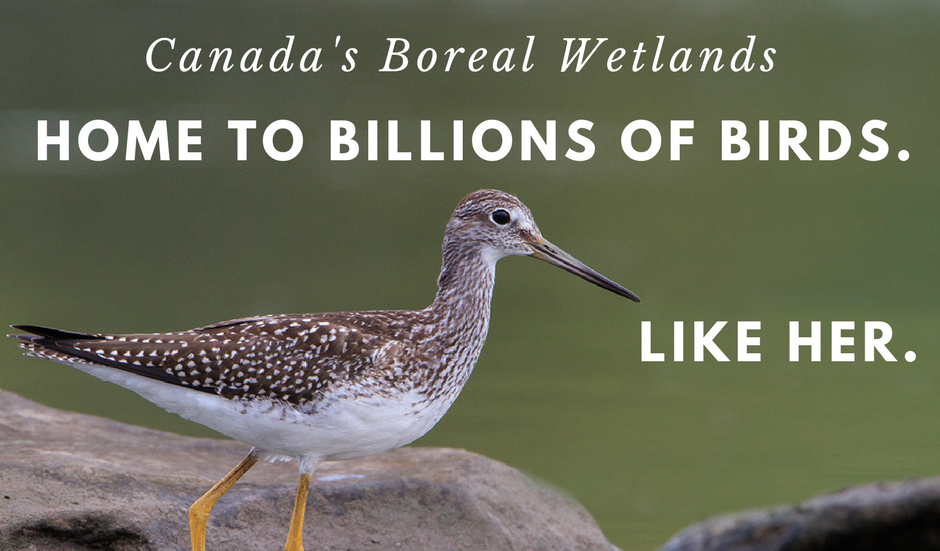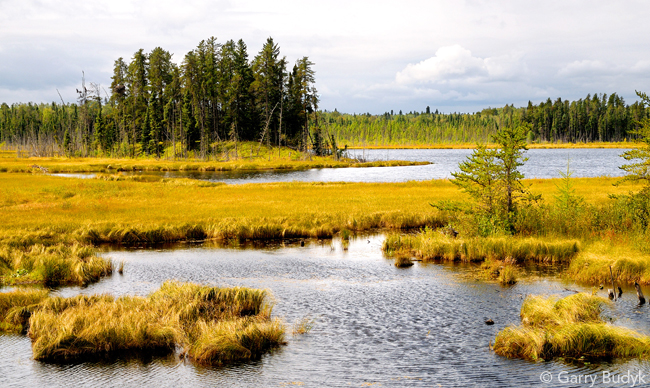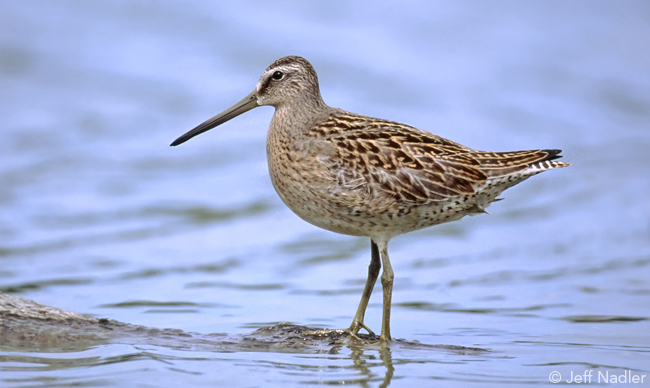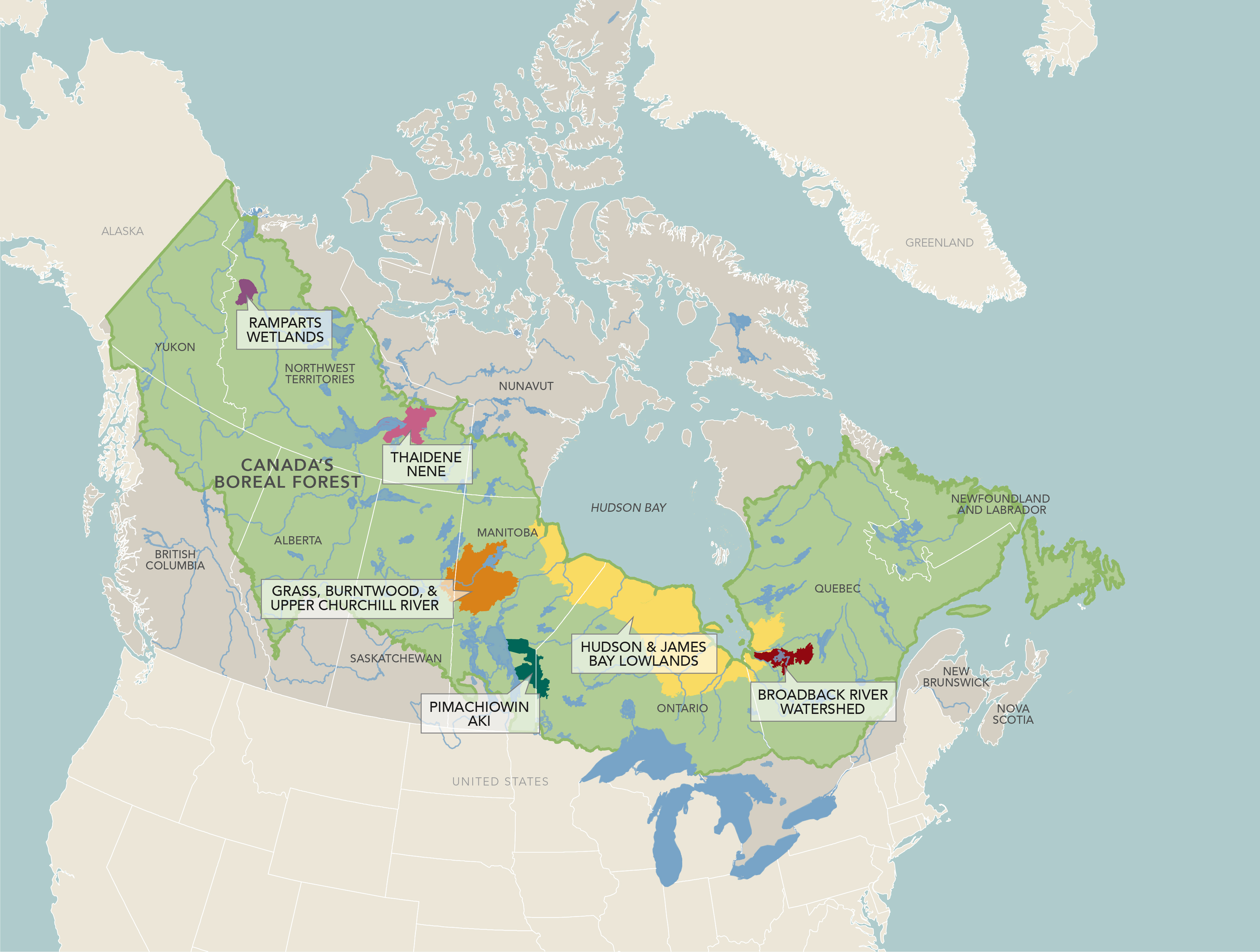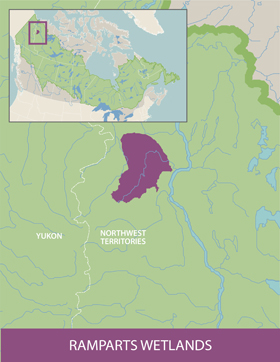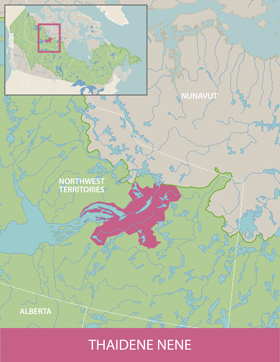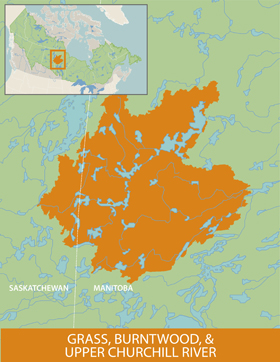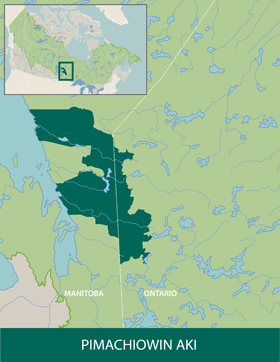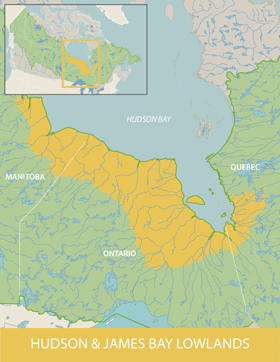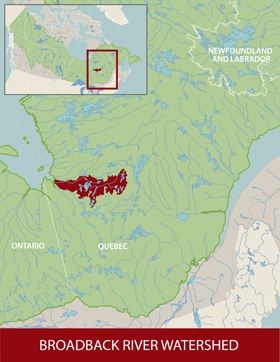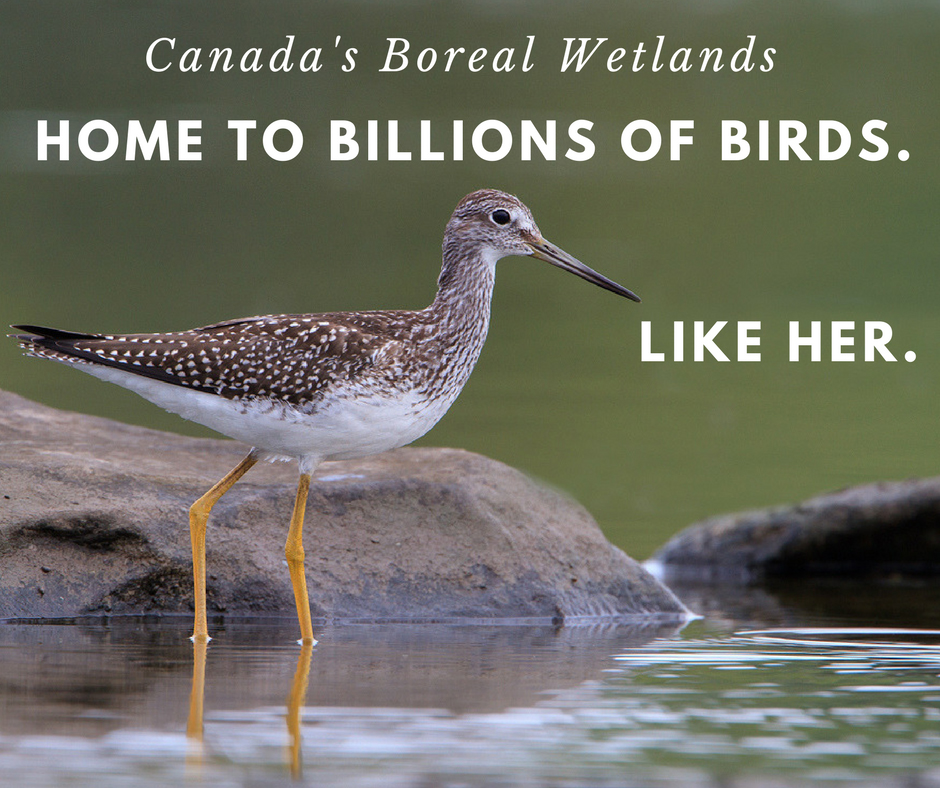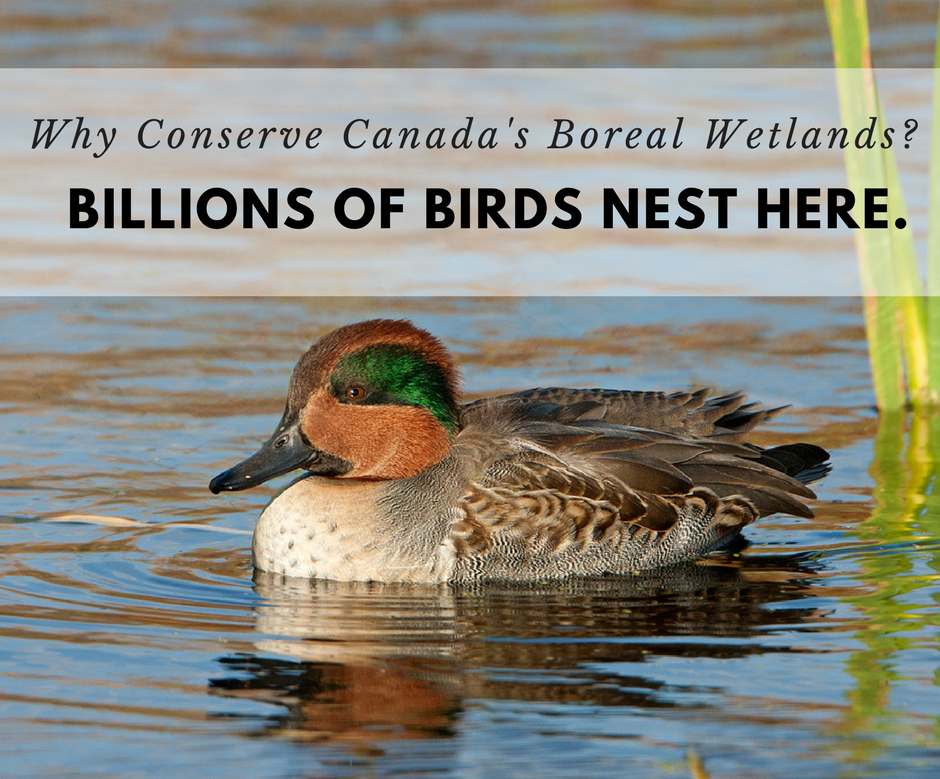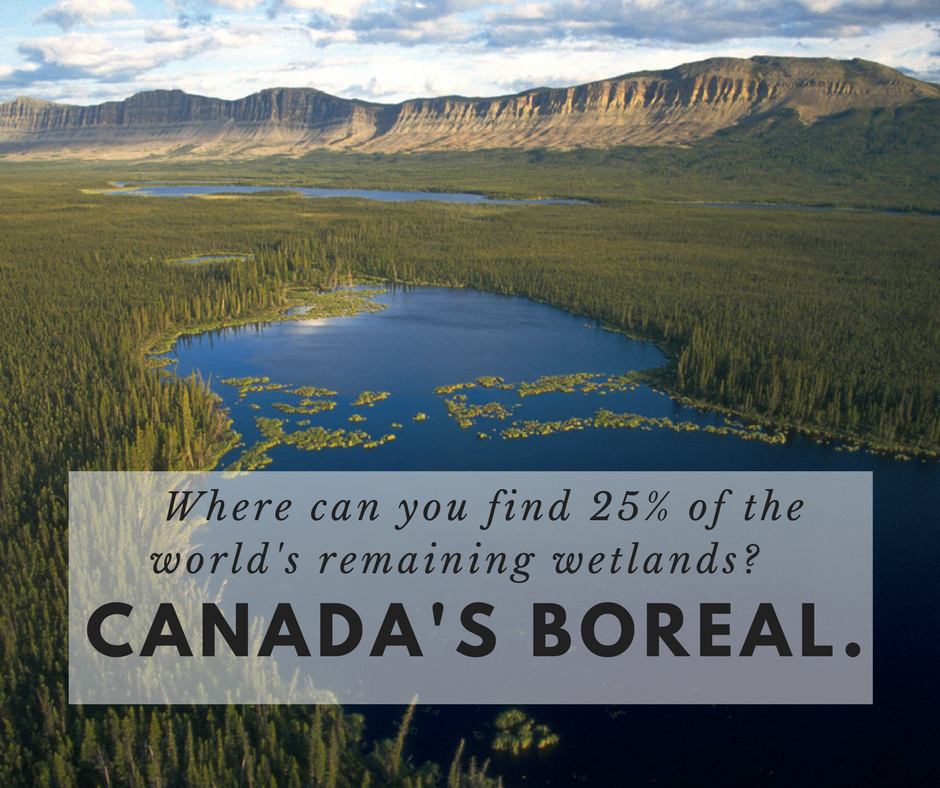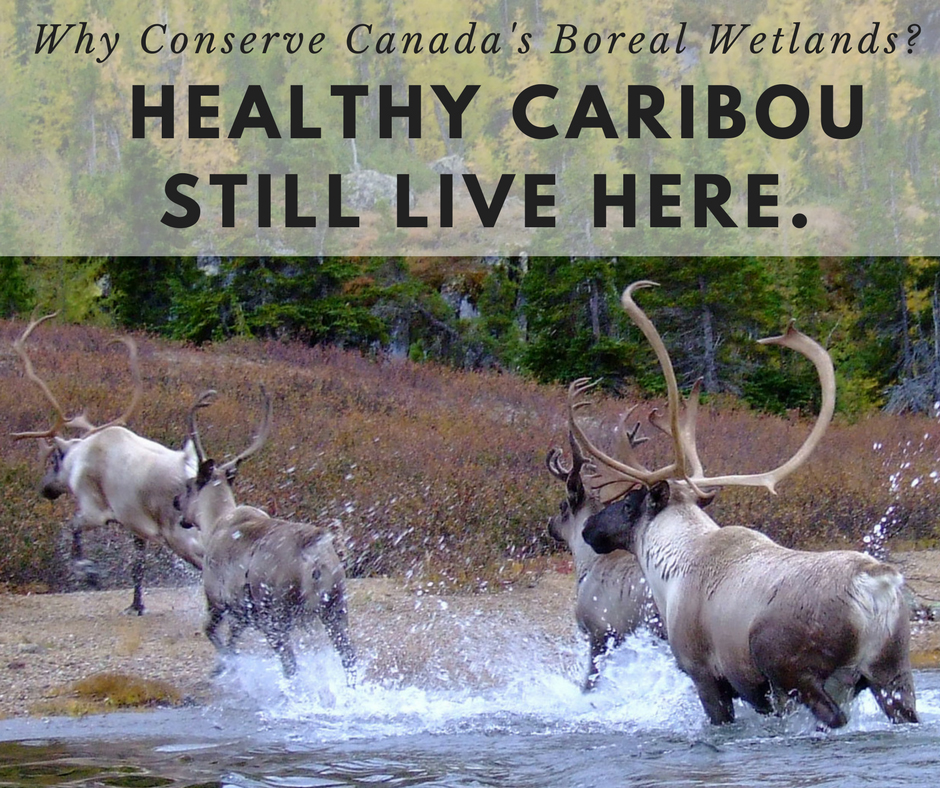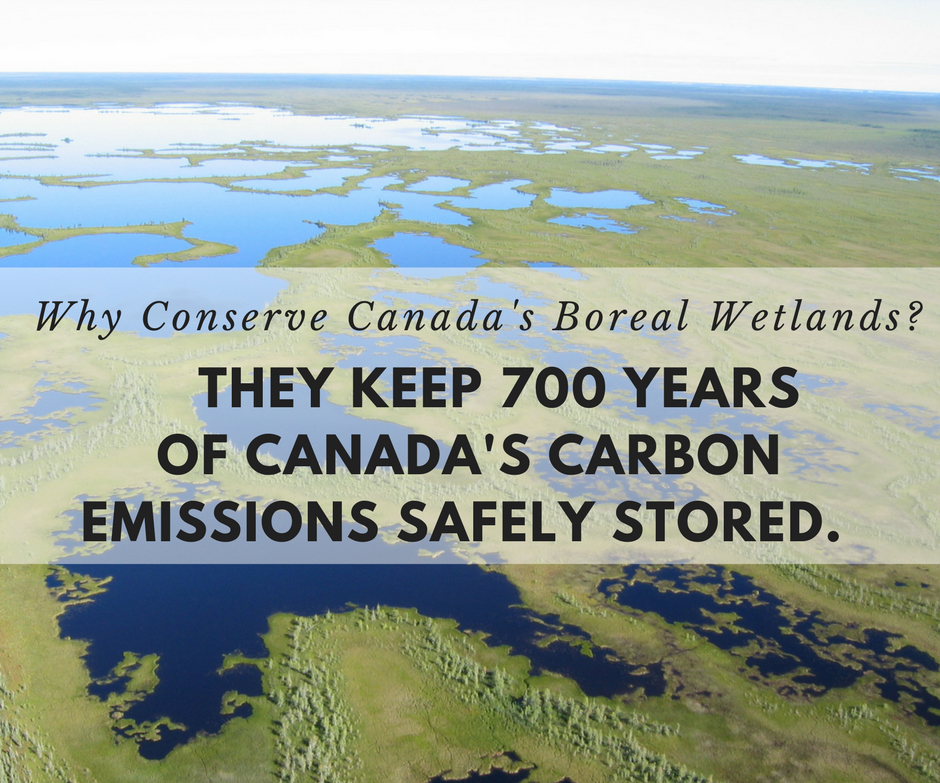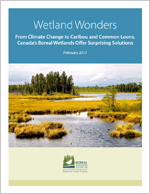Announcements
Wetland Wonders
From Climate Change to Caribou and Common Loons, Canada’s Boreal Wetlands Offer Surprising Solutions
As the world struggles to curb climate change and shield endangered mammals, birds and plants from extinction, Canada has a giant solution hidden in plain sight: its wetlands.
Canada’s Boreal Forest is home to 25 percent of the world’s wetlands. These vibrant reserves of clean water and biodiversity provide rich habitat for wildlife and store enormous amounts of carbon.
Conserving wetlands solves several problems at once.
Now is the time to act. Around the globe, species are going extinct 1,000 times faster than the historic rate while the hazards of climate change increase rapidly each year. Canada is striving to meet several international targets aimed at confronting climate change and preserving biodiversity. Wetlands can help meet those goals.
Not only do Canadian wetlands hold some of the largest natural banks of carbon on Earth, they purify water by filtering out contaminants and can dramatically reduce the extent of droughts and floods when left unaltered. They also act as critical hotspots for biodiversity and are essential in the life cycles of a vast proportion of Canada’s plants and wildlife. Protecting a wetland ecosystem achieves many benefits through just a single act of conservation.
And no country has a greater opportunity to conserve wetlands on a large scale than Canada.
Canada’s Boreal Forest contains the largest concentration of wetlands on Earth. Extending 1.19 million square kilometres, these wetlands represent an area larger than the province of Ontario. This preponderance is a large part of why the Boreal has been dubbedthe ‘Forest of Blue’.
Peatlands, a type of wetland formed out of layers of vegetation that never fully decay, are widespread throughout the Boreal. These regions are immensely rich in stored carbon; Canada’s boreal peatlands alone hold a minimum of 147 billion tonnes of carbon, an amount equivalent to 736 years’ worth of Canada’s industrial greenhouse gas emissions. The Hudson and James Bay Lowlands is considered by many researchers to be one of the largest intact, carbon-rich peatlands in the world. Keeping these carbon-absorbing regions intact and free of development is no less critical than reducing emissions from industry, transportation, or from other sources.
Boreal wetlands offer food and habitat for some of Canada’s most iconic wildlife; moose and caribou rely heavily on these lush aquatic landscapes, the latter being a particular conservation focus given many herds are experiencing plummeting populations.
These wetlands are also a big reason why Canada’s Boreal attracts such a large proportion of North America’s migratory birds during the summer breeding season. Between 3 to 5 billion birds pour back out of the Boreal once the chicks have hatched and fledged, ranging from swallows and shorebirds to warblers and waterfowl. With 325 bird species known to rely on the Boreal for habitat, this represents nearly half of all bird species commonly found in Canada and the United States.
When it comes to conserving wetlands, Canada has some impressive initiatives underway. For example, Ontario and Quebec have both pledged to protect at least 50% of their wetland-rich northern boreal regions, consistent with the visionary Canadian Boreal Forest Conservation Framework that has been advocated for by 1,500 scientists worldwide.
Increasingly, Indigenous communities and governments across Canada are taking the lead on protecting the Boreal Forest and its vast wetland networks. They are also leveraging a variety of tools and channels to achieve such protections. Among the most notable is the development of formal land-use plans that proactively conserve areas of cultural and ecological importance, some of which have already protected millions of hectares of habitat. Indigenous Guardians, who serve as stewards on the land, help Indigenous communities conserve and manage the land based on traditional knowledge, cultural values, and Western science.
Canada can do its part to curb climate change and habitat loss by strengthening efforts to protect its giant share of wetland treasures.
Boreal Wetlands of Conservation Focus
In the following section, we look at six carbon-rich wetland regions within Canada’s Boreal Forest that significantly contribute to global bird life, provide still-healthy habitat for caribou, and are either in need of conservation planning or are still awaiting final, permanent protection designation.
Ramparts River and Wetlands
Better known as Ts’ude niline Tu’eyeta to the Dene and Métis peoples of the Sahtu Region, Ramparts River and Wetlands is internationally acclaimed for its high volume of carbon-dense wetlands and its importance for migratory bird populations.
Enormous concentrations of waterfowl converge upon this intricate mosaic of tree stands interspersed with open wetlands each spring and early summer. Overall, it is one of the top three most populated areas within the broader Mackenzie River Valley in terms of waterfowl. This including large populations of Surf and White-winged Scoters as well as both Greater and Lesser Scaup, the latter being species of conservation concern given their long-term population declines. Several species are particularly dependent on the region: at least one percent of the entire Canadian population of Scaup, Scoters, and Pacific Loons breed in just this area alone, which qualifies it as a Key Habitat Site.
In terms of caribou, the region is unique in the sense that it supports both mountain and boreal populations of woodland caribou, the former being a species of Special Concern and the latter listed as Threatened under the Canadian Species at Risk Act (SARA). Additional species of Special Concern that rely heavily on the region include Peregrine Falcon, wolverine (western population), and grizzly bear (northwestern population), demonstrating the region’s important value in retaining healthy populations of a number of Canada’s species facing population declines.
Beaver, one of the North’s best-known icons, flourish in its deep networks of wetlands as well. As many as 58 to 86 active beaver dams per 100 square kilometres were found in one surveyed region.
Ramparts River and Wetlands (under its traditional name Ts’ude niline Tu’eyeta) was identified as a candidate protected area under the Northwest Territories’ previous conservation planning strategy. However, it still only retains interim protection status and will need permanent designation to ensure the region remains ecologically intact for generations to come.
Thaidene Nene
Water is the dominant theme throughout much of Thaidene Nene. Wrapping around the East Arm of Great Slave Lake—the world’s 9th largest lake—Thaidene Nene extends far to the northeast and encircles a vast region speckled with wetlands and small and medium lakes.
If conserved, it would be one of the only protected areas in Canada that contain portions on both sides of the tree line, where northern trees and greenery of the Boreal Forest slowly fade into vast expanses of vibrant yellow and red Arctic tundra. The variability of this area provides a critical buffer for northern plants and animals struggling to cope with climate change, acting as a transitional bridge for species in pursuit of better habitat should their current habitat become unsuitable.
Thaidene Nene is at the heart of barren ground caribou country, a rare example of a planning region providing not one but three distinct major herds with significant habitat: the Bathurst, Beverly, and Ahiak herds. Not to be confused with their boreal woodland counterparts further south, barren ground caribou have become of great conservation concern due to enormous population declines among numerous herds across Canada’s North.
From a bird perspective, it is a crucial nesting region for several raptor species and a home to countless numbers of songbirds. The shores and cliffs overlooking the East Arm of Great Slave Lake hold the nests of Ospreys, Bald Eagles and Peregrine Falcons, the latter being a species of Special Concern under the Canadian Species at Risk Act. Thousands of ducks, geese, and swans flock here each spring, summer, and fall, making it an important region for waterfowl as well.
The Lutsel K’e Dene First Nation has been working with both the Government of the Northwest Territories and the federal government to enshrine Thaidene Nene as an interconnected protected area consisting of a national park reserve, a territorial park, and potentially a specially managed caribou zone. Indigenous people with Section 35 rights will be respected and northerners will continue to enjoy the East Arm like they always have. The Lutsel K’e Dene First Nation will be managing Thaidene Nene in equal partnership with both crown governments.
Grass, Burntwood, and Upper Churchill River Watersheds
While this mosaic of dense forest interspersed with open and mixed wetlands lacks the formal name and official boundaries of other conservation planning regions, it is right up there with some of Canada’s most famous parks and refuges when it comes to preserving biodiversity.
Black spruce-dominated peatlands and expansive fens featuring sedge and alder are intricately woven into this northern landscape. The region’s many islands that are surrounded by small lakes and open wetlands provide ideal calving grounds for boreal woodland caribou, a species of great conservation concern across Canada.
Despite accounting for only a small proportion of the species’ overall range geographically, the region is home to one of the densest clusters of caribou populations in Canada. No less than 7 of the 51 population units (14%) delineated under the federal recovery strategy reside there: the Boreal Shield population in Saskatchewan and the Kississing, Naosap, Reed, Wabowden, Wapisu, and Manitoba North populations in Manitoba. This high concentration of distinct herds in a limited area means that returns on investment from a conservation perspective are enormous, especially given three of the populations are among only 14 in all of Canada deemed to be self-sustaining if habitat is left untouched.
Strong fish populations support significant populations of colonial nesting waterbirds such as Common Tern, Herring Gull, and Double-crested Cormorant. Bald Eagles and Common Loons also feast on the abundance of aquatic organisms present. It also provides important breeding habitat for a number of waterfowl, including Bufflehead, Common Goldeneye, Ring-necked Duck, and Green-winged Teal.
The provincial government has committed itself to funding First Nations in Manitoba that want to develop community-based land use plans, which identify areas of cultural and ecological importance for protection while allowing for sustainable development where appropriate. These plans have the potential to protect large portions of the province’s boreal region, including parts of these adjacent watersheds.
Pimachiowin Aki
Nestled in the heart of the Boreal Forest and spanning the Manitoba-Ontario border east of Lake Winnipeg, Pimachiowin Aki lives up to its Anishinaabe name that translates to “the land that gives life.”
It offers a perfect embodiment of what much of the Boreal Shield—one of the Boreal’s seven major ecozone types—resembled before the expansion of European influence. Pimachiowin Aki is one of the only large expanses of Boreal Shield remaining in Canada that has yet to be impacted by fragmentation associated with industrial development, agriculture, settlements, or roads.
This is reflected in the wildlife that can be found throughout Pimachiowin Aki, especially woodland caribou. The region accounts for a large proportion of the habitat used by the Atikaki-Berens herd—Manitoba’s largest at 300-500 individuals—and more importantly is one of the herds that have been deemed as self-sustaining if its habitat is left undisturbed (only 28% of caribou planning regions earned similar designation in the most recent federal recovery strategy).
Birds also relish this vast expanse of unspoiled wilderness. More than 200 species commonly rely on the region for habitat, including at least eight Species at Risk that are faring poorly in more developed parts of the Boreal (Piping Plover, Short-eared Owl, Common Nighthawk, Whip-poor-will, Olive-sided Flycatcher, Barn Swallow, Canada Warbler, and Rusty Blackbird). Many birds that breed further north converge in the region during fall migration, acting as a migratory ‘funnel’ for birds before they continue down through the Mississippi Flyway.
It is also home to a higher concentration of wetlands than is typically found elsewhere in the Boreal Shield. The more than six million cubic metres of pristine freshwater that flow through the region’s wetlands annually and its four major rivers that flow into Lake Winnipeg help ameliorate the lake’s ailing condition—which stems largely from agricultural runoff to the south and west—from worsening.
The First Nations of Pimachiowin Aki have, over the last decade, developed and implemented land management plans that have conserved vast areas and are now leading an effort, in partnership with the governments of Manitoba and Ontario, to establish Pimachiowin Aki as a UNESCO World Heritage Site.
Hudson and James Bay Lowlands
If the Boreal Forest is the global ‘king’ of carbon, the Hudson and James Bay Lowlands would be the crown jewel. Wetlands dominate this open, expansive region in a way that is rarely found anywhere on Earth. It forms the third largest wetland region globally and contains the single largest carbon-rich peatland system on Earth. Peatlands are particularly rich in carbon, meaning the Hudson and James Bay Lowlands are potentially the most carbon-dense terrestrial ecoregion on Earth. This 373,000-km² expanse of mostly pristine wetlands and rivers is also mostly intact.
Its vast area provides habitat for perhaps the world’s highest abundance of the peat-loving Palm Warbler and very likely a high proportion of the global population of the mysterious Yellow Rail—a small, chicken-like marsh bird that is rarely seen and little studied. The marine shores of the region are among the world’s most important migratory feeding concentrations for shorebirds and waterfowl.
In fact, the region as a whole likely hosts a large proportion of the global populations of many shorebird and waterfowl species during migration. Unusually high counts of species like Red Knot, Hudsonian Godwit, Ruddy Turnstone, Black Scoter, and Lesser Snow Goose indicate incredibly high use of these shoreline habitats. These lowlands are also unique as the host of the southernmost population of polar bears in the world—the only known population that regularly dens in burrows in earth rather than snow and ice. Both migratory tundra caribou and woodland caribou occur within the Hudson and James Bay Lowlands. Estuaries along the coast are also vital habitat for beluga whales, walrus, ringed seals, and bearded seals.
Land-use planning is underway in many Indigenous communities in Ontario, Quebec, and Manitoba. The provincial governments of Ontario and Quebec are committed to protecting at least 50% of the northern portions of both provinces while the Manitoba government has pledged to provide financial support for First Nations to carry out land-use planning. Currently, vast proportions of the area are unprotected and are currently open to mineral exploration and staking without the benefit of regional land planning for development and associated infrastructure.
Broadback River Watershed
The easiest way to see the special nature of Quebec’s Broadback River Watershed would be to fly over the region immediately south of it. Clearcuts and roads dominate the landscape leading up to the fertile watershed, which straddles the northern limit of where forestry is allowed.
The Broadback River glides west through the region, descending through a series of dramatic waterfalls before reaching Lake Evans. One of the remaining undammed rivers in the region, it continues to the James Bay coastline, flowing through a large concentration of carbon-rich wetlands, including much muskeg.
The region is in many ways at the frontline of the effort to save boreal woodland caribou given its location and their sensitivity to human-related habitat disturbances. Two of the three populations identified by the Cree in the James Bay region, both of which face population declines, depend heavily on the watershed. Moose, another staple for many residents of the region, have more recently become a concern as well.
Several of Canada’s most threatened songbirds return to the watershed for summer breeding habitat each year, including Canada Warbler, Evening Grosbeak, and Rusty Blackbird. The area also supports large populations of waterfowl, such as Common Goldeneye and the increasingly threatened American Black Duck.
The region’s waterways and wetlands support species seldom found elsewhere, such as the Quebec emerald—a dragonfly only found in Quebec and parts of the Maritimes. They also produce large populations of brook trout and trophy-size northern pike.
Several Nations within the Grand Council of the Crees have collaborated to create the Broadback Watershed Conservation Plan, which calls for an extensive network of protected areas and special management zones throughout the watershed. Recent progress has seen important cultural sites for the Cree First Nation of Nemaska as well as Lake Evans obtain protection. Other areas remain unprotected, however, including the last remaining tracts of intact forest within the traditional territories of the Cree First Nation of Waswanipi.
Social Resources
Did you know 25% of the world’s wetlands can be found in Canada’s Boreal Forest? This “forest of blue” provides breeding grounds for billions of North America’s migratory birds, but is in need of better protection. http://www.borealbirds.org/announcements/wetland-wonders
Billions of birds from the Boreal Forest celebrate #WorldWetlandsDay! But critical habitat in need of conservation http://www.borealbirds.org/announcements/wetland-wonders
What do billions of birds, caribou and carbon have in common? Canada's Boreal wetlands! #WorldWetlandsDay http://www.borealbirds.org/announcements/wetland-wonders
Standalone graphics (click for larger version):
Additional Resources
View/download Wetland Wonders as PDF >
Individual Sections:
- Boreal Wetlands of Conservation Focus >
- Ramparts Wetlands >
- Thaidene Nene >
- Grass, Burntwood, Upper Churchill Watersheds >
- Pimachiowin Aki >
- Hudson & James Bay Lowlands >
- Broadback River Watershed >


